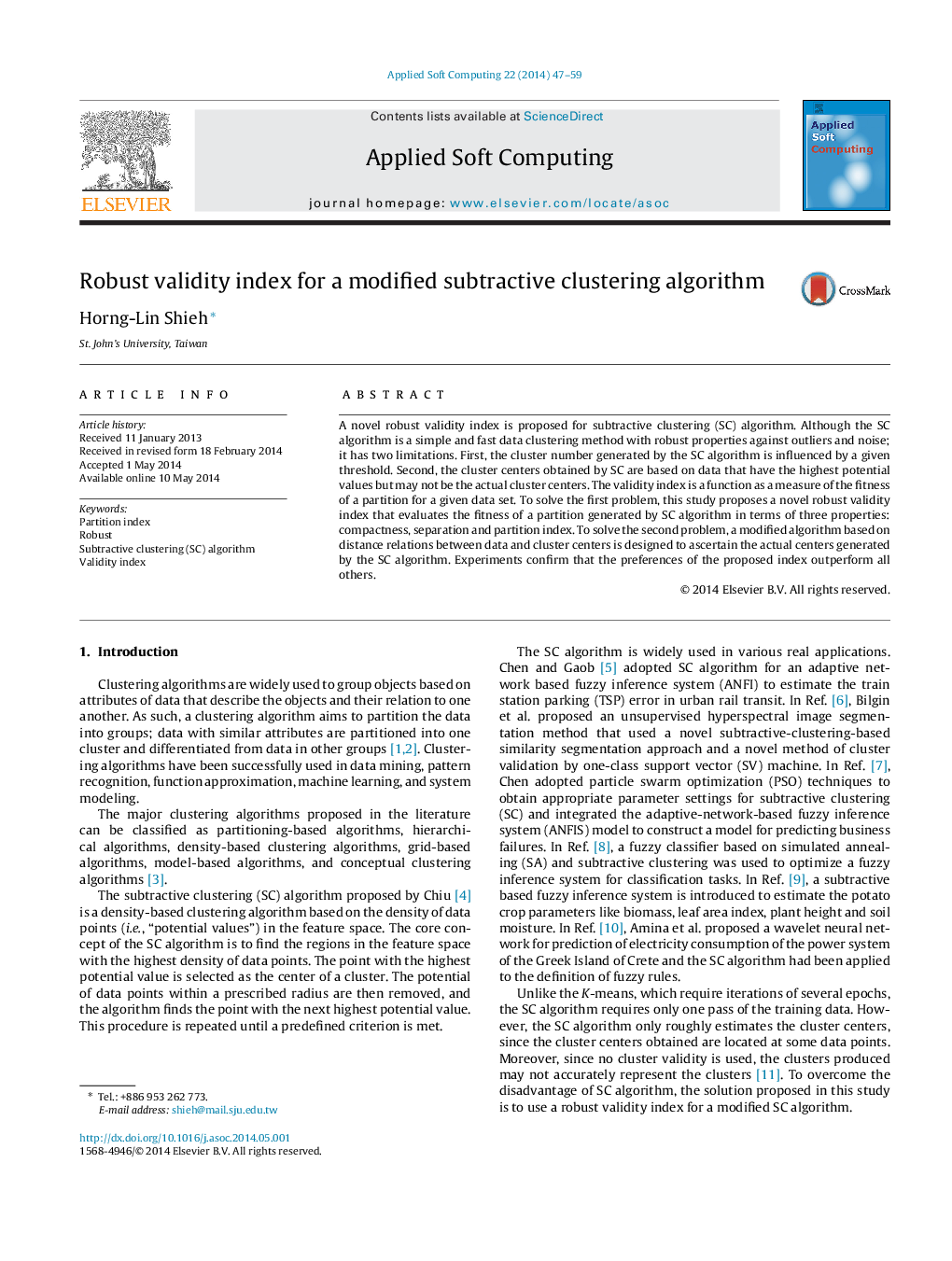| کد مقاله | کد نشریه | سال انتشار | مقاله انگلیسی | نسخه تمام متن |
|---|---|---|---|---|
| 495334 | 862825 | 2014 | 13 صفحه PDF | دانلود رایگان |
• This study proposes a novel robust validity index that evaluates the fitness of a partition generated by SC algorithm in terms of three properties: compactness, separation and partition index. Several experiments confirm that the preferences of the proposed index outperform all others.
A novel robust validity index is proposed for subtractive clustering (SC) algorithm. Although the SC algorithm is a simple and fast data clustering method with robust properties against outliers and noise; it has two limitations. First, the cluster number generated by the SC algorithm is influenced by a given threshold. Second, the cluster centers obtained by SC are based on data that have the highest potential values but may not be the actual cluster centers. The validity index is a function as a measure of the fitness of a partition for a given data set. To solve the first problem, this study proposes a novel robust validity index that evaluates the fitness of a partition generated by SC algorithm in terms of three properties: compactness, separation and partition index. To solve the second problem, a modified algorithm based on distance relations between data and cluster centers is designed to ascertain the actual centers generated by the SC algorithm. Experiments confirm that the preferences of the proposed index outperform all others.
Performance comparison of various indexes when using a data set containing 16 clusters with 100 noises. (a) Data set and cluster centers. (b)–(h) The resultant performances of indexes PE, XB, FS, I-index, CO, COr, and CSα, respectively.Figure optionsDownload as PowerPoint slide
Journal: Applied Soft Computing - Volume 22, September 2014, Pages 47–59
